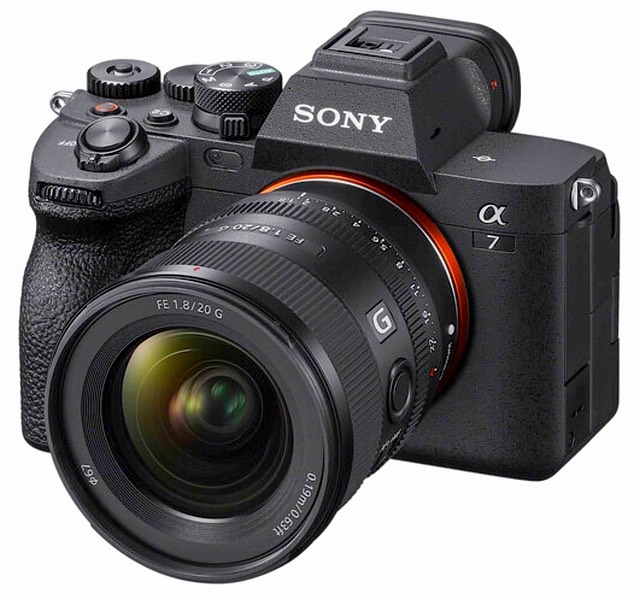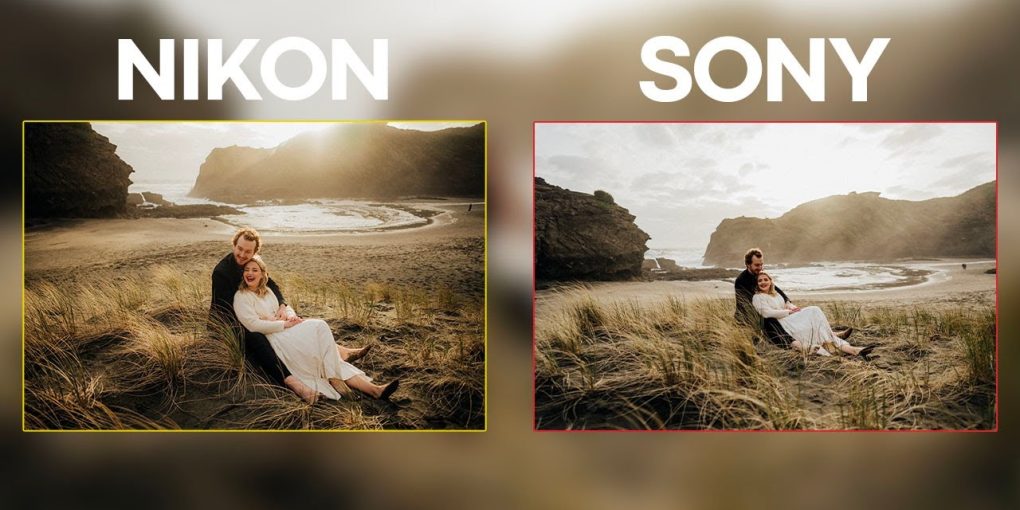Nikon Z6 II vs Sony A7IV: Which Camera Reigns?
The Nikon Z6 II and Sony A7IV are both excellent full-frame cameras. If you prefer a sleeker camera with a smaller body, Sony may be the better choice.
However, if you value a more professional look and don’t mind the size, investing your money in the Nikon would be a great option. Additionally, if you’re looking for versatility, Canon’s full-frame cameras are worth considering as well. All in all, the decision between the Nikon Z6 II and Sony A7IV ultimately comes down to personal preferences and specific needs.

Credit: www.sansmirror.com
Table of Contents
- General Comparison
- Body Features
- Sensor
- Autofocus
- Screen
- Viewfinder
- Photography And Videography Features
- Photography Features
- Video Features
- Connectivity And Other Features
- Connectivity
- Lens
- Storage
- Physical
- Frequently Asked Questions For Nikon Z6 Ii Vs Sony A7iv
- Which Is Better Nikon Z6ii Or Sony A7iv?
- Is The Nikon Z6 Ii A Professional Camera?
- Is Nikon Camera Better Than Sony?
- Is There A Big Difference Between A7iii And A7iv?
- Conclusion
- CallofPhotography
General Comparison
When it comes to comparing the Nikon Z6 II and the Sony A7IV, there are several key factors to consider. In this general comparison, we will look at the body features, sensor, autofocus, screen, and viewfinder of both cameras to help you make an informed decision.
Body Features
The body features of a camera play an important role in its usability and ergonomics. The Nikon Z6 II boasts a robust and weather-sealed magnesium alloy construction, providing durability and reliability in various shooting conditions. On the other hand, the Sony A7IV features a compact and lightweight design, making it ideal for photographers on the go. Both cameras offer comfortable grips and intuitive control layouts, allowing for seamless operation.
Sensor
The sensor is the heart of a camera, and both the Nikon Z6 II and the Sony A7IV excel in this aspect. The Nikon Z6 II features a 24.5-megapixel backside-illuminated (BSI) CMOS sensor, delivering impressive image quality with excellent dynamic range and low-light performance. Meanwhile, the Sony A7IV boasts a higher resolution 30.3-megapixel full-frame sensor, capturing stunning details in every shot. Whether you prioritize resolution or low-light capabilities, both cameras offer exceptional sensor performance.
Autofocus
When it comes to autofocus, both the Nikon Z6 II and the Sony A7IV offer advanced systems that ensure precise and fast focusing. The Nikon Z6 II utilizes a 273-point hybrid autofocus (AF) system, which combines phase-detection and contrast-detection AF for accurate subject tracking. On the other hand, the Sony A7IV features a 693-point phase-detection AF system, providing excellent subject detection and tracking performance. Both cameras excel in capturing moving subjects and deliver reliable autofocus results.
Screen
The screen of a camera plays a vital role in framing and reviewing shots. The Nikon Z6 II features a tilting 3.2-inch LCD touchscreen, allowing for easy navigation and flexible shooting angles. Additionally, it offers a higher resolution of 2.1 million dots, providing a more detailed display. In contrast, the Sony A7IV sports a vari-angle 3.0-inch LCD touchscreen, offering even more versatility for composing shots from various perspectives. Both cameras provide responsive touch controls and clear live-view displays.
Viewfinder
The viewfinder is an essential component for composing shots and provides a more immersive shooting experience. The Nikon Z6 II comes with a high-resolution electronic viewfinder (EVF) with a resolution of 3.69 million dots, offering a bright and detailed view of the scene. On the other hand, the Sony A7IV features a similar high-resolution EVF with a slightly higher resolution of 3.68 million dots. Both cameras provide a comfortable and lag-free viewing experience, allowing for accurate framing and precise exposure adjustments.
Photography And Videography Features
When it comes to photography and videography, both the Nikon Z6 II and the Sony A7 IV offer a range of impressive features. Let’s take a closer look at what each camera has to offer in terms of their photography and videography capabilities.
Photography Features
Both the Nikon Z6 II and the Sony A7 IV excel in delivering stunning photography results. Here are some key features to consider:
- Sensor: The Nikon Z6 II boasts a 24.5 megapixel full-frame sensor, while the Sony A7 IV features a 30.4 megapixel full-frame sensor. Both sensors capture high-resolution images with excellent detail.
- Autofocus: The Nikon Z6 II utilizes a hybrid autofocus system with 273 focus points, providing accurate and fast autofocus performance. On the other hand, the Sony A7 IV employs a 693-point phase-detection autofocus system, ensuring precise focus in various shooting situations.
- Image Stabilization: Both cameras come with in-body image stabilization, which helps to eliminate camera shake and produce sharp images even in low light conditions.
- ISO Range: The Nikon Z6 II offers an ISO range of 100-51,200, expandable up to 204,800. Similarly, the Sony A7 IV offers an ISO range of 100-51,200, expandable up to 50-102,400, allowing for excellent low-light performance.
- Burst Shooting: The Nikon Z6 II can shoot up to 14 frames per second (fps), whereas the Sony A7 IV can shoot up to 10 fps, making both cameras suitable for capturing fast-paced action.
Video Features
In terms of video capabilities, both the Nikon Z6 II and the Sony A7 IV offer impressive features for videographers. Here’s what you need to know:
- Resolution and Frame Rates: The Nikon Z6 II supports 4K UHD video recording at up to 30 frames per second (fps), while the Sony A7 IV can capture 4K UHD video at up to 60 fps. Additionally, both cameras offer Full HD video recording at various frame rates.
- Video Autofocus: The Nikon Z6 II utilizes a hybrid autofocus system with eye-detection and animal-detection autofocus, ensuring accurate and smooth focus tracking during video recording. Similarly, the Sony A7 IV employs advanced autofocus technology for precise subject tracking.
- Video Stabilization: Both cameras feature in-body image stabilization that helps to minimize camera shake and deliver smooth, steady footage.
- External Recording: Both cameras have the capability to output clean video signals through HDMI, enabling external recording for enhanced video quality and flexibility.
- Slow Motion: The Sony A7 IV offers the ability to capture slow-motion footage with frame rates up to 120 fps in Full HD, allowing for creative video effects.
In conclusion, both the Nikon Z6 II and the Sony A7 IV offer a wide range of photography and videography features that cater to the needs of professional photographers and videographers. Whether you prioritize sensor resolution, autofocus performance, image stabilization, or video capabilities, both cameras deliver exceptional results in their respective categories.
Connectivity And Other Features
When comparing the Nikon Z6 II and the Sony A7IV, one important aspect to consider is their connectivity and other features. These features play a crucial role in enhancing the overall user experience and convenience.
Connectivity
In terms of connectivity options, both cameras offer a comprehensive range of features that allow seamless transfer of files and remote control capabilities. The Nikon Z6 II is equipped with built-in Wi-Fi and Bluetooth, enabling users to effortlessly connect their camera to compatible devices and easily share images and videos. It also supports FTP transfer for convenient file transfer to designated servers.
On the other hand, the Sony A7IV boasts built-in Wi-Fi, NFC, and Bluetooth connectivity, allowing for quick and hassle-free pairing with smartphones and tablets. This makes it convenient for users to transfer files wirelessly and control the camera remotely using compatible mobile applications.
Lens
Both the Nikon Z6 II and Sony A7IV offer a wide selection of lenses to cater to various photography needs. The Nikon Z6 II is compatible with the extensive line-up of NIKKOR Z lenses, which are renowned for their exceptional image quality and advanced optics. This ensures that users can capture stunning images with sharpness and clarity in any shooting situation.
Similarly, the Sony A7IV utilizes the versatile E-mount system, providing photographers with access to an extensive range of high-quality lenses. Whether it’s wide-angle, telephoto, or prime lenses, users can effortlessly mount and use a variety of lenses to achieve their desired photographic results.
Storage
When it comes to storage options, the Nikon Z6 II and Sony A7IV offer flexibility and convenience. The Nikon Z6 II features dual memory card slots – one for CFexpress Type B cards and one for UHS-II SD cards. This dual slot configuration allows users to choose between simultaneous recording, overflow recording, or separating files based on their preferences or shooting requirements.
Similarly, the Sony A7IV also offers dual card slots, supporting both SD and CFexpress Type A cards. This provides users with additional storage capacity and versatile options for managing their files during shooting sessions.
Physical
The physical design of a camera is often a determining factor for many photographers. The Nikon Z6 II features a robust and weather-sealed magnesium alloy body, ensuring durability and protection against dust and moisture. It also offers a comfortable grip, intuitive button layout, and a tilting touchscreen for easy navigation and operation.
As for the Sony A7IV, it boasts a lightweight and compact build, making it ideal for shooters who prioritize portability during their photography journeys. Additionally, it has a similar weather-sealed construction, offering resistance against harsh shooting conditions.
Overall, both the Nikon Z6 II and Sony A7IV provide excellent connectivity options, lens compatibility, storage flexibility, and physical design. The choice between the two ultimately depends on personal preferences and specific shooting needs.

Credit: www.youtube.com

Credit: www.mattgranger.com
Frequently Asked Questions For Nikon Z6 Ii Vs Sony A7iv
Which Is Better Nikon Z6ii Or Sony A7iv?
The better choice between Nikon Z6II and Sony A7IV depends on your preferences. If you prioritize a sleek and compact camera body, Sony is a great option. However, if you prioritize a more professional look and don’t mind the size, Nikon is worth considering.
Ultimately, both cameras are excellent full-frame options.
Is The Nikon Z6 Ii A Professional Camera?
Yes, the Nikon Z6 II is a professional camera with excellent features and capabilities. It offers high-quality images, advanced autofocus, and a range of photography and videography features. It is a reliable choice for professional photographers.
Is Nikon Camera Better Than Sony?
Sony may be preferred for its sleek and smaller camera bodies, while Nikon offers a more professional and larger option. Consider Canon for versatility with full-frame cameras. Both Nikon and Sony are excellent choices for full-frame cameras.
Is There A Big Difference Between A7iii And A7iv?
The A7III and A7IV have some differences, but they are both excellent full-frame cameras.
Conclusion
Both the Nikon Z6 II and Sony A7IV offer excellent features for photographers. The choice between the two ultimately depends on your personal preferences and needs. If you prioritize a sleek camera with smaller bodies, Sony might be the better option.
However, if you value a more professional look and don’t mind the size, investing in Nikon would be a wise choice. Additionally, considering the versatility of a full-frame camera, Canon is also worth considering. Ultimately, choose the camera that aligns with your photography goals and style.
I am a photography enthusiast turned blogger, sharing my passion and expertise on her blog, "CallofPhotography." Growing up surrounded by nature, I developed a love for capturing moments through my lens. After studying Fine Arts with a focus on photography, I launched my blog to share tutorials, gear reviews, and my own photographic work. Through engaging storytelling, I invites readers to join her visual journey, inspiring and empowering photographers of all levels worldwide.


